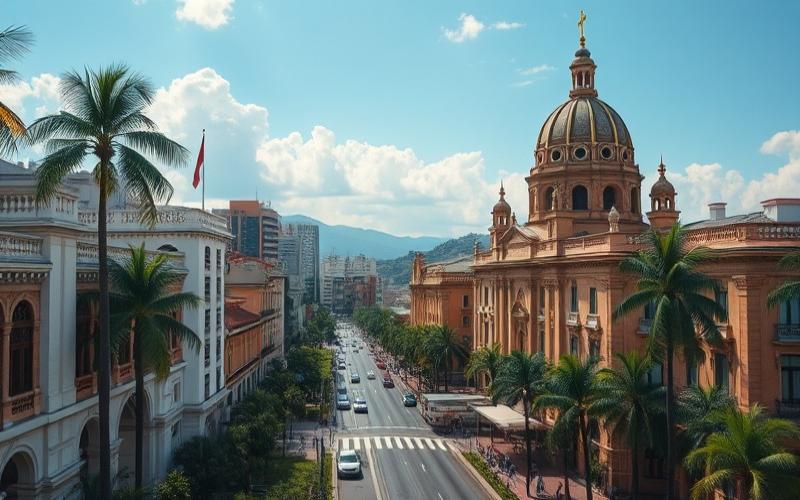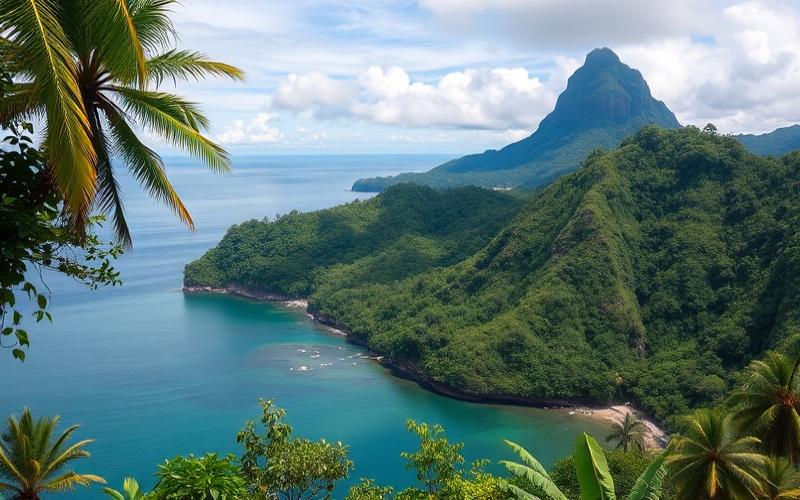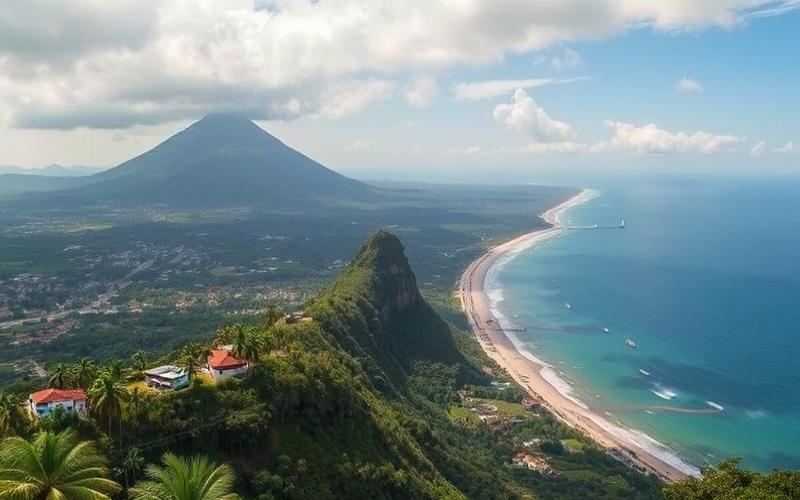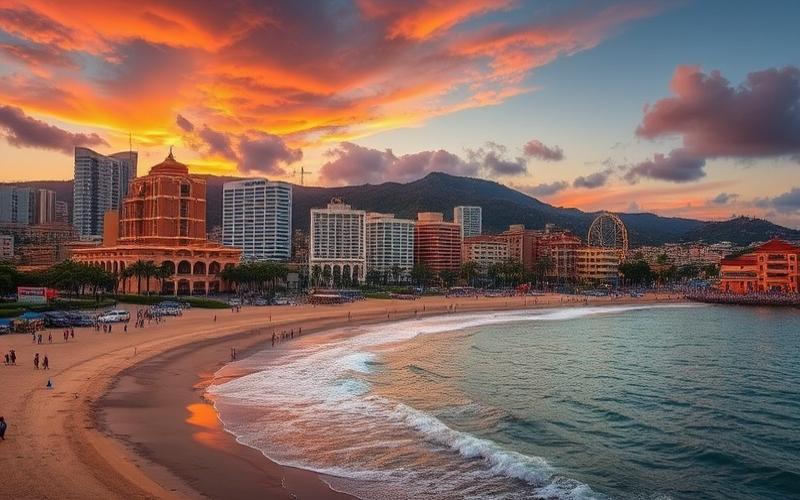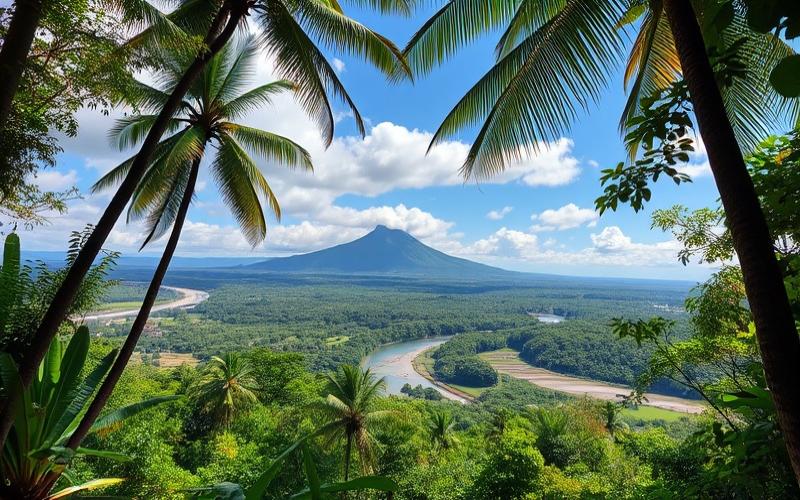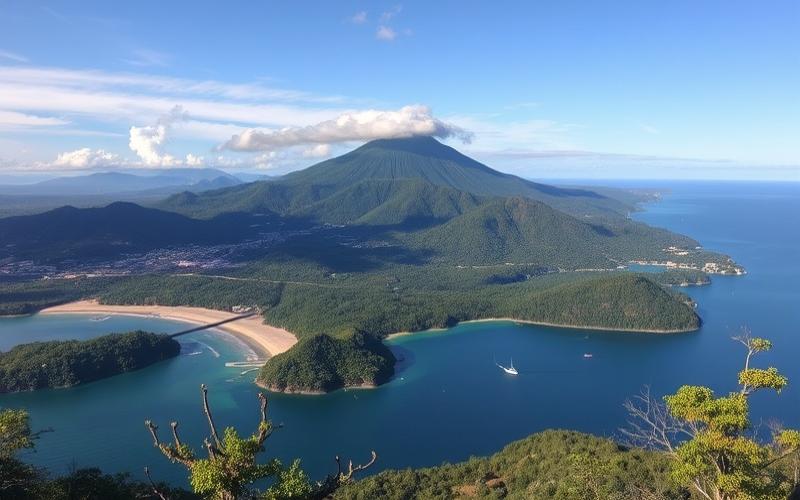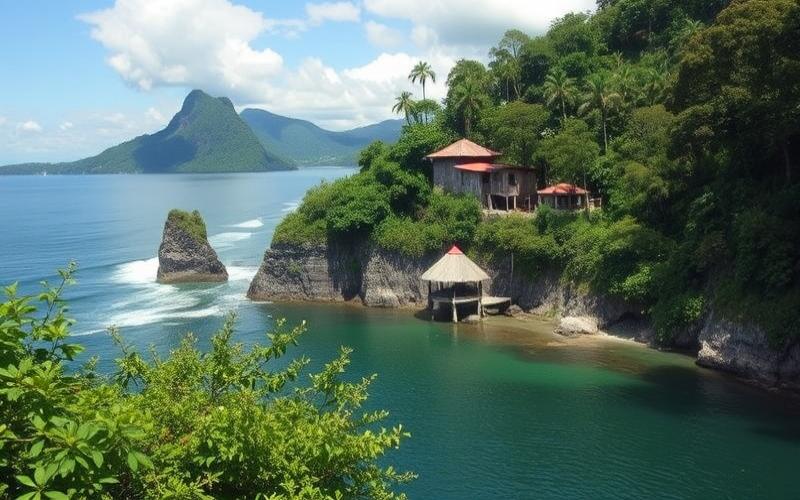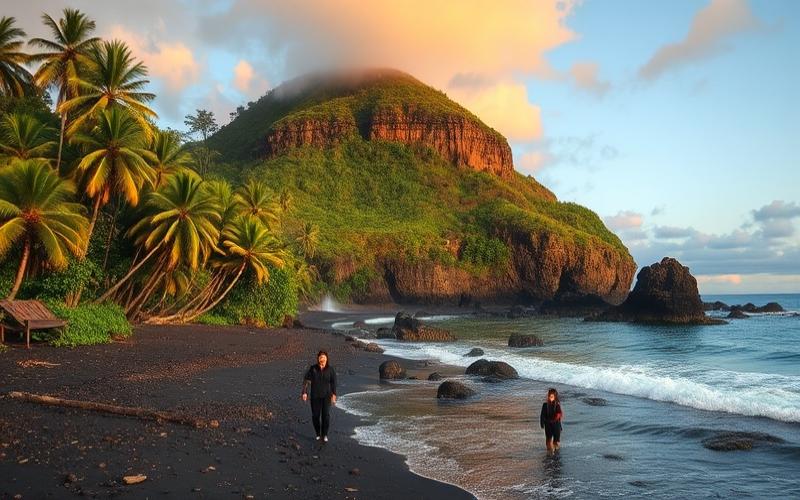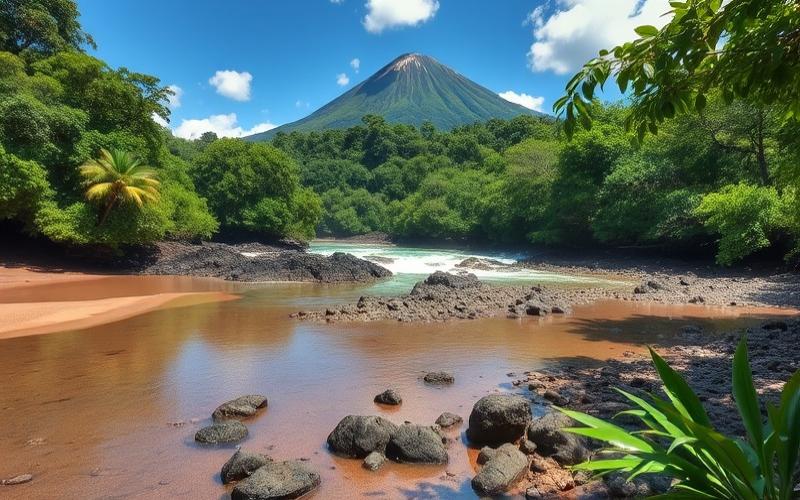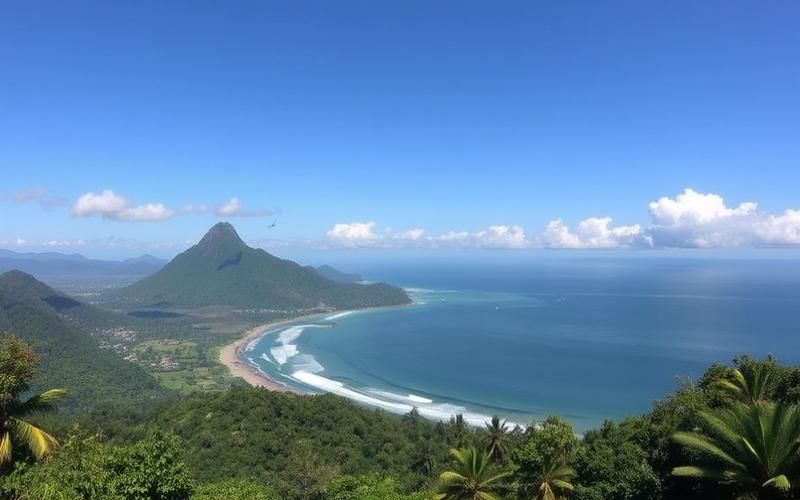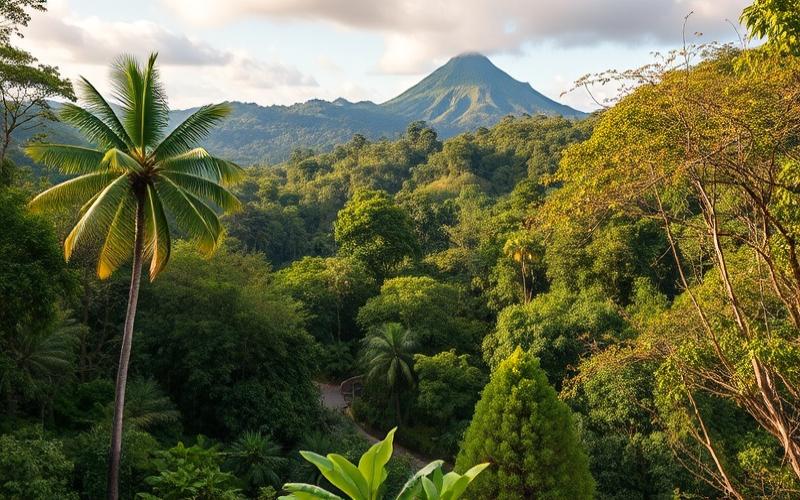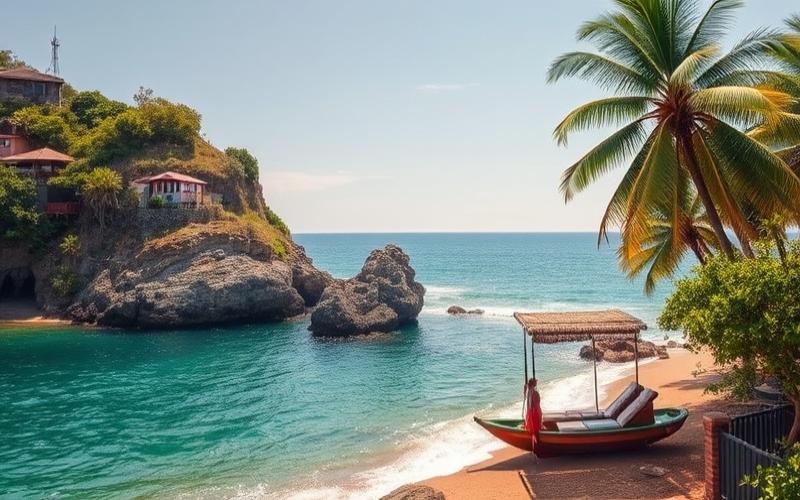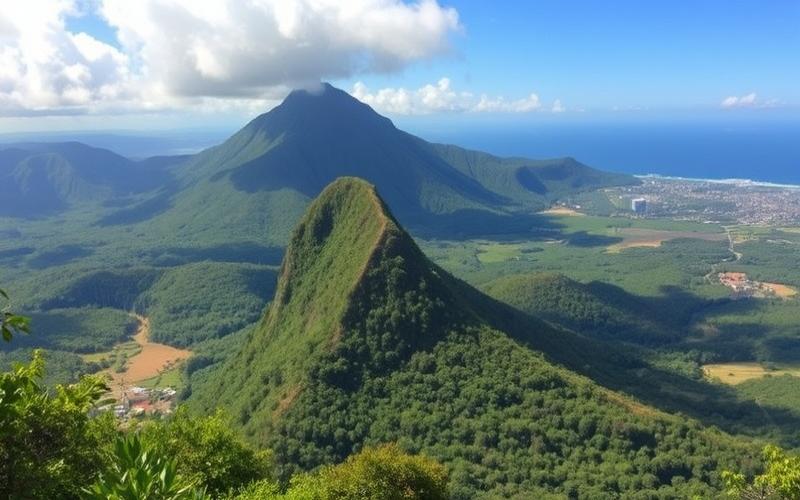
 Published on and written by Cyril Jarnias
Published on and written by Cyril Jarnias
Investing in parking facilities in Costa Rica is an opportunity that deserves special attention, especially in the context of rapid urban expansion and the increasing number of vehicles in the country. With stable economic growth and a favorable political environment, Costa Rica offers fertile ground for real estate investments, including those in the parking sector. Parking facilities can provide stable and secure returns, thanks to demand often exceeding supply, particularly in densely populated urban areas like San José.
Furthermore, the country’s commitment to sustainable development and ecotourism attracts many investors concerned with positive environmental impact. In this article, we will analyze the potential profitability of this booming market and the key factors to consider for maximizing return on investment.
Understanding the Profitable Parking Market in Costa Rica
Analysis of Current Demand for Parking Spaces in Major Cities
Urban centers like San José, Alajuela, and Heredia are experiencing increasing pressure on parking supply due to urban densification and the growing vehicle fleet.
- In San José, private parking occupancy rates regularly exceed 90% during peak hours, with demand outstripping supply in business districts and commercial areas.
- In Alajuela and Heredia, population growth and proximity to Juan Santamaría International Airport heighten the need for secure and well-located parking facilities, particularly for residents, employees, and tourists.
Impact of Growing Urbanization on Parking Needs
- Costa Rica’s urbanization rate has surpassed 80%, with continuous migration to main cities.
- Expansion of commercial, residential, and office areas leads to saturation of public and private parking spaces.
- Land scarcity in urban centers makes parking facilities more attractive as investments, especially as demand continues to grow with increasing vehicles per household.
Overview of Local Regulations Regarding Parking Construction and Operation
- Legislation imposes strict standards for accessibility, safety, and urban integration for new parking facilities.
- Any parking construction must obtain a municipal permit, including an urban impact study.
- Operators are required to comply with capped rates, defined opening hours, and requirements for signage and lighting.
- Video surveillance and liability insurance are mandatory in most municipalities.
- On-street parking is regulated by municipal police, with deterrent fines for illegal parking.
Economic Trends Influencing the Parking Real Estate Market
- Costa Rica’s GDP is expected to grow by 3.8% in 2025 and 2026, supported by private consumption and the dynamic tourism sector.
- The tourism market, valued at over $300 million USD, is projected to grow annually by 5% until 2029.
- Tourist flow remains strong, with over 2.6 million air arrivals expected in 2025, increasing demand for parking near hotels, shops, and attractions.
- The appreciation of the colón against the dollar has increased costs for tourists, but domestic demand for parking remains strong due to growing motorization.
- Travel habits remain centered on private cars, due to a still limited public transportation network in urban peripheries.
Case Studies on Successful Parking Projects
| Project | City | Type | Features |
|---|---|---|---|
| Parqueo Central | San José | Underground | 320 spaces, automated management, 24/7 security |
| Multiplaza Parking | Escazú | Shopping Center | 1,200 spaces, electric charging stations |
| Parking Aeropuerto | Alajuela | Airport | 700 spaces, direct terminal access, subscription service |
Expert Testimonials and Industry Opinions
- “The profitability of parking facilities in San José exceeds that of many traditional real estate assets, due to high turnover and low maintenance costs.” — Local Investor, 2024
- “The main risk lies in evolving urban policies aimed at reducing car presence in city centers. Strategic locations near transportation hubs should be prioritized.” — Specialized Urban Planner, 2025
- “Connected parking facilities, with mobile app reservations, offer added value and meet user demand for flexibility.” — Parking Network Manager, 2025
Market Forecasts and Outlook
- Sustained demand growth in dense urban areas.
- Increased opportunities in secondary cities and tourist zones.
- Innovation potential through digitalization of services (contactless payment, online booking).
- Risks related to real estate market volatility, sustainable mobility policies, and changing tourist flows.
A thorough understanding of the profitable parking market in Costa Rica requires joint analysis of urban dynamics, local regulations, economic trends, and field experience feedback.
Good to Know:
The parking market in Costa Rica is experiencing sustained growth, particularly in major cities like San José, Alajuela, and Heredia, where rapid urbanization is increasing demand for parking spaces. With an expanding urban population and a steady rise in vehicle numbers, attractive investment opportunities are emerging, despite strict regulations on parking construction that require precise safety and accessibility standards. Investors should consider key factors, such as the impact of annual tourist flow, which stimulates seasonal demand for parking spaces, and local travel habits, which show a growing preference for private transport. The success of recent projects, such as the automated parking facility in San José, demonstrates the profitability potential with high occupancy rates. However, it is crucial to pay attention to risks, such as high land costs and increasing competition. Experts recommend partnering with experienced local players and carefully evaluating economic forecasts, which indicate a favorable climate supported by continuous tourism growth, to manage risks and maximize return on investment.
Factors Influencing Parking Investment Profitability in Costa Rica
| Factor | Analysis |
|---|---|
| Local Demand for Parking in San José and Liberia | San José, the capital and economic center of the country, experiences high urban density with significant road traffic. Parking demand is high, especially in central and commercial districts where supply remains limited. In Liberia, the gateway to the Guanacaste tourist region via its international airport (LIR), demand is driven by tourist flow as well as growing urbanization around main axes and hotel zones. The Pulmitan bus terminals in San José also generate increased need for paid parking spaces for both local and international travelers. |
| Local and National Regulations | Operating a parking facility requires obtaining municipal permits (uso de suelo) as well as environmental approvals if the project exceeds certain thresholds or substantially modifies existing land. Municipalities also impose standards regarding accessibility for people with reduced mobility, fire safety, and internal signage. Strict controls are enforced against illegal parking: fines are deterrent and can include license plate removal by traffic police, strongly encouraging use of official paid parking instead of informal street parking in adjacent areas. |
| Acquisition & Maintenance Costs | Average land prices vary significantly by location: they peak in city centers (San José) or near major tourist infrastructure (Daniel Oduber Quirós International Airport in Liberia). Routine maintenance includes staff costs (security), computer/electrical maintenance for automated systems, periodic structural repairs, as well as high annual municipal property taxes in central urban zones. |
| Technological Trends | The sector is rapidly adapting to innovations such as: – Automated management systems: smart barriers with optical reading – Digitalized payment: mobile apps integrating contactless payment or online booking – Connected video surveillance to enhance security These solutions optimize space turnover while reducing some operational costs related to manual control. |
| Competition & Public Projects | Competition remains fierce in urban centers where structured private parking coexists with informal spaces sometimes tolerated during special events (temporary markets). Major public projects – extension of the GAM metropolitan rail network around San José or improvement of intercity transport between San José-Liberia – gradually tend to reduce some individual traffic during certain hours but do not completely eliminate occasional or nighttime needs related to nighttime economic/tourist activities. |
| Economic & Tourist Impact | Costa Rica welcomes several million international tourists annually, with a majority transiting through San José then heading to Guanacaste via Liberia due to supported regional hotel development around main beaches. This creates a marked seasonal peak on all infrastructure related to private/rented transport requiring more secure spaces adapted for both private vehicles and tourist minibuses. |
| ROI Perspectives & Local Business Models | Two main models predominate: – Monthly long-term rental primarily for regular urban workers – Hourly/dynamic pricing adapted to local/international tourism Observed average rates range between 5,000 CRC/month (~$9 USD) outside centers up to 40,000 CRC/month (~$72 USD) in premium central areas; hourly rates typically oscillate between 500 CRC/hour (~$0.90 USD). Profitability closely depends on: * Average daily occupancy rate * Seasonal price adjustment * Direct competitive level In strong central urban/touristic contexts with modern automated management, it is common for a well-established local investor to observe a gross return on investment between 8% and 12% annually. |
Checklist Summary
- Strong structural demand linked to urban density/tourist seasonality.
- Strict regulation favoring use of formal parking facilities.
- High land costs partially offset by high rates/captive market.
- Essential digital innovation to improve net profitability.
- Dynamic competition but limited impact currently by still underdeveloped public transport outside immediate city centers.
- Expected lasting positive effect due to regional economic dynamism oriented toward international tourism/services.
Thorough local analysis therefore allows precise evaluation; each factor must be weighed according to the exact targeted location.
Good to Know:
The profitability of parking investments in Costa Rica depends on several key factors. Demand for parking spaces is strong in cities like San José and Liberia, where urban growth generates increased need, but strict regulations, particularly regarding construction permits, can slow some projects. Land acquisition costs and infrastructure maintenance vary, influenced by location and required materials, while new technologies like digital payments and automated management optimize operations and reduce labor costs. Competition is fierce, especially near commercial areas and tourist sites; however, development of public transport infrastructure could affect long-term demand. As a major tourist destination, Costa Rica sees seasonal fluctuations in parking demand, impacting pricing and return on investment models, with rates that can be adjusted according to seasons to maximize profits. Investors must remain attentive to local economic and tourism developments to optimize their investment strategy.
Case Studies on Airport Parking Investments in Costa Rica
Case Studies on Airport Parking Investments in Costa Rica
| Project | Strategies Used | Challenges Faced | Solutions Implemented | Results Achieved |
|---|---|---|---|---|
| Parking Pura Vida (SJO, San José) | Investment in smart parking with sensors and space guidance system; public-private partnership; targeting foreign tourists. | Saturation during high season; entrance congestion; theft security. | Introduction of LAPI system for access control, installation of AI video surveillance, dynamic flow management. | Average annual occupancy rate: 87%. Revenue increased by 15%/year since modernization. Testimonial: “Digital guidance reduced wait times and increased customer satisfaction,” Operations Director. |
| Aeroparque Liberia (LIR, Guanacaste) | Parking expansion to accommodate international leisure and business travelers; creation of premium spaces with advance online booking. | Increased competition with informal offers around airport; strict regulations on adjacent urban land. | Negotiation with local authorities to obtain extended permits, targeted marketing development focusing on travel agencies and regional businesses. | Stable occupancy off-season (65%) but suboptimal compared to initial forecasts (target not reached). Estimated gross yield: 8%/year versus projected target of 12%. Mixed perception among local investors regarding aggressive pricing strategy imposed by main neighboring site operator. |
| Parqueo Express Alajuela (near SJO) | Low-cost model focused on quick shuttles to terminals, additional services like car wash or paid electric charging, recurring local clientele. | Regulatory difficulties related to peri-airport urban zoning; strong fluctuation according to tourist peaks linked to seasons. | Revision of business model toward more pricing flexibility during low season; promotional alliances with regional airlines. | Return on investment lower than anticipated at launch (-30%), but stability regained after business model adaptation from the second year. |
Key Factors Influencing Profitability
- Location: The closer the parking is to main terminals (example SJO), the better the occupancy.
- Facility Size: Large parking facilities (>500 spaces) benefit from economies of scale but are more exposed to seasonal variations.
- Customer Type: Tourists prioritize comfort and security while business travelers seek speed and premium options.
- Local Regulations: Restrictive zoning or regulatory changes can delay or even compromise certain projects.
Approach Comparison:
| Approach | Independent Local Investor | Public-Private Partnership |
|---|---|---|
| Risk | Low diversification – strong dependence on local tourist traffic. | Better risk sharing thanks to partnership between public and private actors; facilitated access to strategic airport data. |
| Expected Profitability | Moderate but stable if quick adaptation to tourist cycles. | Higher when combined with active technological innovation policy. |
| Flexibility Facing Regulatory Changes | Often limited. | Privileged access to legislative negotiations via institutional partnerships. |
Positioning in Current Economic Context:
The relative slowdown observed in some tourism branches since late 2023 temporarily weighs on occupancy rates outside high tourist season.
Nevertheless, increasing integration of smart technologies – automatic detection via IoT sensors or LAPI systems – now allows more agile management to optimize revenue and user experience while limiting fixed costs associated with traditional management.
“Future competitiveness will inevitably come through advanced digitalization coupled with strengthened collaboration between local private actors and public operators,” according to an expert consultant involved with the Pura Vida Parking consortium.
Main Lessons Learned
- Customer diversification = increased resilience;
- Immediate terminal proximity = possible price premium;
- Regulatory flexibility + technological innovation = sustainable competitive advantages;
- Critical size necessary (>200 spaces) to absorb exogenous sector shocks;
Illustrative Data:
- Average annual occupancy rate of smart parking at SJO: approximately 85–90%
- Typical net yield post-modernization: between 8–15% depending on configuration
- Observed payback period in successful projects: ~5 years
Investing today in this sector therefore requires continuous anticipation facing global tourist flow evolutions as well as proven ability to adapt quickly both technologically and commercially!
Good to Know:
A case study on the San José airport parking highlights the strategic importance of location, which allowed attraction of a clientele mostly composed of business travelers, resulting in 18% annual profitability. In contrast, a similar project in Liberia had difficult beginnings with a less central location, initially generating only 8% return on investment but adjustments, such as infrastructure improvements and targeted marketing campaigns, raised this figure to 12% within two years. A third case, near Quepos airport, showed that partnership with local travel agencies to attract international clients can compensate for an initial lack of business travelers, bringing yield to 15% per year. These examples illustrate how facility size and flexibility facing regulatory requirements, as well as a fine understanding of customer needs, are crucial to maximizing profitability in this sector. A local expert emphasizes that successful investments distinguish themselves by their ability to quickly adapt to Costa Rica’s economic fluctuations, relying on updated market data to adjust their strategy.
Strategies to Maximize Parking Space Yield
Strategies to Maximize Parking Space Yield in Costa Rica
- Space Utilization Optimization
- Design parking to accommodate different vehicle types (cars, motorcycles, bicycles).
- Convert certain areas into temporary storage spaces (co-storage), particularly during low traffic periods.
- Install enclosed boxes or compartments to diversify offerings and attract customers seeking security or privacy.
- Utilize unused surfaces for complementary services (electric charging stations, scooter parking).
- Importance of Location and Accessibility
- Prioritize locations near attraction hubs: city centers, tourist zones, airports, train stations or offices.
- Ensure easy access, clear signage, and smooth internal circulation.
- Adapt offerings to local and tourist clientele considering Costa Rica’s strong seasonality.
- Modern Technologies to Increase Efficiency
- Install automated management systems: access control via QR code or license plate, automatic barriers, occupancy sensors.
- Offer mobile applications for booking, payment, and locating available spaces.
- Use dynamic pricing software to adjust prices according to time, demand, local events or weather.
- Varied Payment Models
- Hourly, daily, subscription payment (monthly or annual).
- Offer special packages for events, overnight stays or weekends.
- Integrate contactless and mobile payment solutions (Apple Pay, Google Pay).
- Provide preferential rates for residents, local businesses or tourists.
- Additional Services to Increase Profits
- On-site vehicle washing.
- Electric vehicle charging stations.
- 24/7 security guard service or video surveillance.
- Bicycle or electric scooter rentals.
- Temporary storage spaces for luggage or sports equipment (particularly attractive for tourists).
- Partnerships with Local Businesses and Mobility Platforms
- Collaboration with hotels, car rental agencies, transport companies or ride-sharing platforms.
- Provision of spaces for shared vehicle fleets or people transport.
- Integration with urban mobility applications to attract broader clientele.
| Strategy | Main Advantages | Adaptation to Costa Rica |
| Space Optimization | High occupancy rate, revenue diversification | Strong seasonal demand, varied tourism |
| Location & Accessibility | Increased foot traffic, customer loyalty | Dynamic tourist and urban zones |
| Modern Technologies | Cost reduction, better customer experience | Young and connected clientele, increased mobility |
| Varied Payment Models | More accessibility, increased conversions | Growing use of mobile payment |
| Additional Services | Added value, differentiation | High tourist expectations |
| Local Partnerships | Visibility, regular client flow | Strong network and proximity culture |
- Specific Cultural and Economic Aspects in Costa Rica
- Welcoming international tourists requires multilingual signage and adapted services.
- Environmental respect is a key value in Costa Rica: prioritize sustainable solutions (electric stations, smart energy management).
- Mobility habits are evolving rapidly, with growing interest in alternative and shared transport.
- Tourist seasonality requires adapting offerings and pricing according to peak attendance.
➤ A flexible, innovative approach attentive to local specificities allows maximizing parking yield in Costa Rica.
Good to Know:
To maximize parking space yield in Costa Rica, it is essential to optimize space utilization by prioritizing vertical parking and space sharing with local businesses. Central location near tourist attractions or high-traffic areas ensures better attendance, while accessibility should include infrastructure adapted for electric vehicles. Integration of modern technologies, such as mobile apps for booking and contactless payment, increases operational efficiency. Additionally, offering additional services like car washes or food kiosks can boost revenue. Diverse payment models, including monthly subscriptions and flexible hourly rates, increase appeal for different user profiles. The Costa Rican economic and cultural context encourages partnerships with tourism businesses and mobility platforms, capitalizing on growing tourist influx and the importance of alternative transport modes.
Disclaimer: The information provided on this website is for informational purposes only and does not constitute financial, legal, or professional advice. We encourage you to consult qualified experts before making any investment, real estate, or expatriation decisions. Although we strive to maintain up-to-date and accurate information, we do not guarantee the completeness, accuracy, or timeliness of the proposed content. As investment and expatriation involve risks, we disclaim any liability for potential losses or damages arising from the use of this site. Your use of this site confirms your acceptance of these terms and your understanding of the associated risks.



